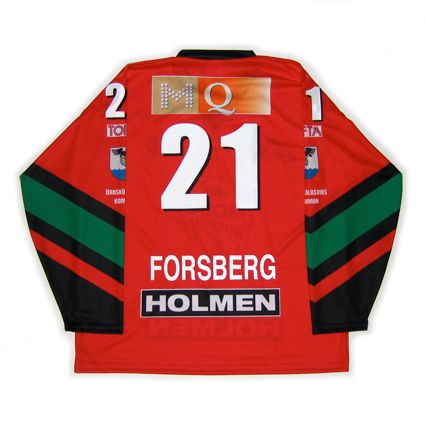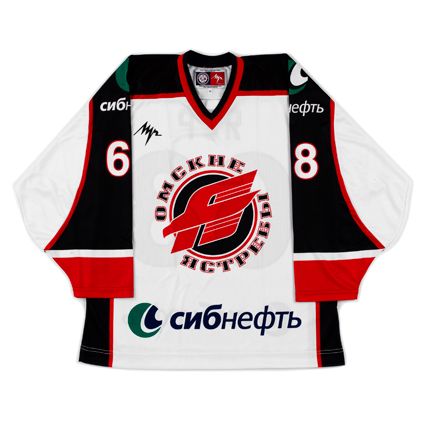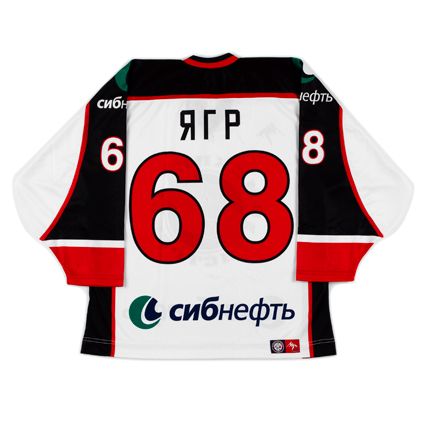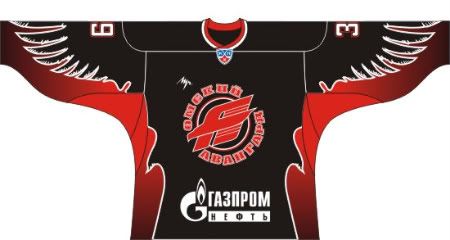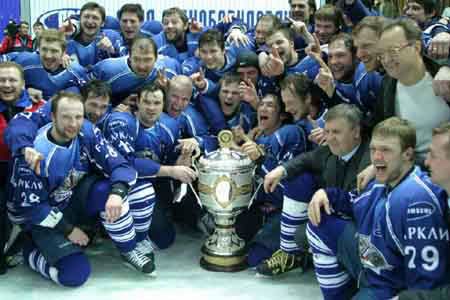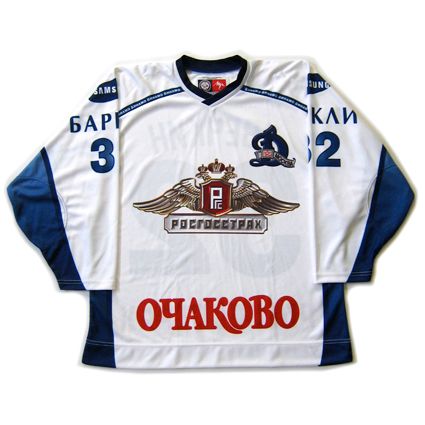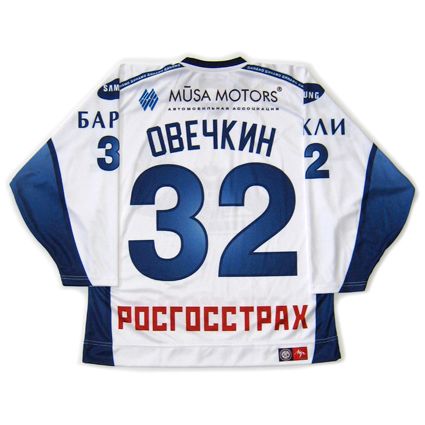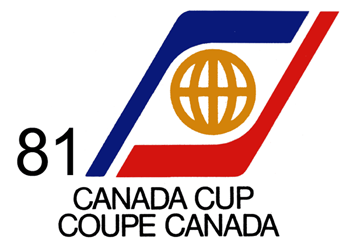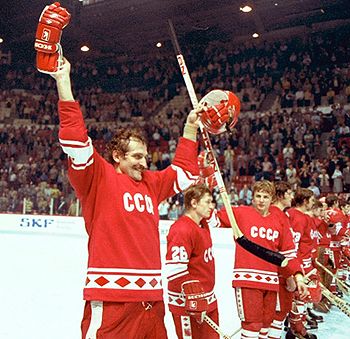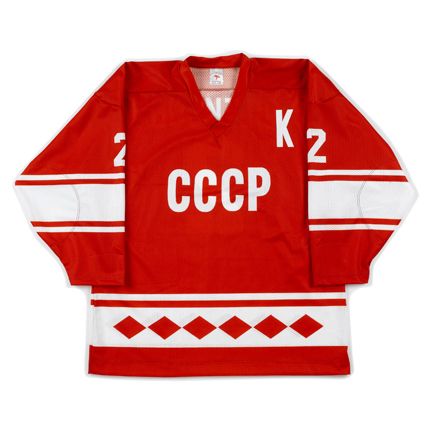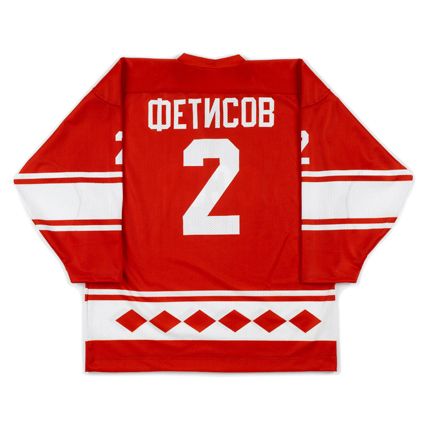Saturday, September 19, 2009
2004-05 MODO Hockey Peter Forsberg Jersey
The fourth jersey of "The Lockout Collection" sees us travel up to Sweden for our next stop.
Here is a Swedish TV report on Forsberg playing for Modo in the 2004-05 season, where he can be seen wearing the home version of today's featured jersey.
As we have seen, while many NHL players followed the money and found employment in Russia during the NHL lockout, many players chose other countries, with Sweden being the second most popular, especially among native Swedes, naturally.
One such player was Peter Forsberg, who returned to his hometown of Örksköldsvik to play for MODO Hockey, the club for whom he made his professional debut in 1989-90. Forsberg skated for MODO for six seasons, which included winning both the Golden Puck as Swedish Player of the Year and the Golden Helmet for Swedish Elitserien Most Valuable Player in 1993 and repeated the feat of winning both again 1994 before becoming a member of the NHL's Quebec Nordiques for one season prior to their relocation to Denver, Colorado where they became the Avalanche.
Injuries began to take their toll on Forsberg, who had his spleen removed during the 2001 NHL playoffs, causing him to miss not only the remainder of the playoffs, but factored into his decision to take the following regular season off before returning for the 2002 playoffs. He was also limited to 39 games in 2003-04 following his MVP season the year prior, so it should not have been a surprise when injuries affected his return to MODO as well.
Coached by his father Kent Forsberg and teamed with twins Daniel and Henrik Sedin as well as Markus Näslund, who all hail from Örksköldsvik, Forsberg scored 39 points, on 13 goals and 26 assists, but he was limited to 33 games of the 50 game Swedish schedule due to a broken bone in his and and surgery following a dislocated wrist.
MODO was eliminated in the first round of the playoffs by Färjestads BK in six games as Forsberg was only able to appear in one game in the series.
After a return to the NHL with the Philadelphia Flyers and a stint with the Nashville Predators, Forsberg had surgery on his foot, which would would keep him out of all but 16 Colorado Avalanche games in 2007-08, which included seven playoff games. The 2008-09 season would see him attempt to play once more, but only make it into three games with MODO, where he would score a goal and record two assists. He managed 23 games with MODO in 2009-10, scoring 30 points, and four games for Sweden in the 2010 Olympics, all of which gave him enough encouragement to return to the NHL with Colorado, but it was an ill-fated attempt which ended after only two games in 2010-11 bringing and end to his career once and for all.
Today's featured jersey is a 2004-05 MODO Hockey Peter Forsberg jersey as worn during his time in Sweden during the NHL lockout. This jersey is typical of many European jerseys in that it features no less than 19 sponsor logos, which sometimes make it hard to recognize which word is actually the player's name, especially lesser known ones, thanks in part to the inconsistency in Europe regarding the players names sometimes being positioned below the back numbers and sometimes in the more traditional location above the numbers.
The jersey is all dye-sublimated except for the name and numbers, which are sewn on twill material, including the drop-shadow for the numbers.
Based on the change in jersey style, we believe this to be the one goal he scored in his attempted return to the ice in 2008-09 for MODO against Skellefteå.
This final highlight is from the 1993-94 playoffs, where Forsberg scores in overtime to give MODO the victory.
Labels:
Forsberg Peter,
Lockout 2004,
MODO
Friday, September 18, 2009
2004-05 Avangard Omsk Jaromir Jagr Jersey
Next up in "The Lockout Collection" is yet another jersey from the Russian Superleague.
With the players locked out by the owners in 2004-05, Jaromir Jagr first signed up to play with HC Kladno in the Czech Republic, which was his first professional team when he was only 16 years of age. After 17 games with Kladno, he left for Avangard Omsk of the Russian Superleague.
While in Omsk, which is located 1700 miles east of Moscow in Siberia, Jagr would score 16 goals and 22 assists for 38 points in 32 games. Avangard, which translates to "Vanguard", would finish in 6th place in the RSL standings and draw third place Metallurg Magnitogorsk, one of the few teams actually located even further east of Omsk.
Magnitogorsk would draw first blood with a 5-2 win and then put Omsk on the brink of elimination in their best-of-five series by taking the critical second game by a 2-1 score. Avangard would stay alive with a 4-1 win in Game 3 and even the series with a 4-2 win in Game 4, to force a deciding Game 5. Omsk would win 4-3 in overtime on a goal by Jagr to stun favored Metallurg by winning three straight after being down 2 games to none.
Their reward for knocking of Metallurg would be to face regular season champions Dynamo Moscow, whose 2004-05 roster included Pavel Datsyuk and Alexander Ovechkin. Omsk would continue their winning streak with a 3-2 win, but would be destroyed 11-0 in Game 2. They would drop a heartbreaker 1-0 in Game 3 and would be eliminated by the eventual champions 3-1 in Game 4.
Unlike in North American leagues, Omsk did face off against Lokomotiv Yarosalvl, the fifth seed, in a best-of-three series to determine the bronze medal winners. Lokomotiv would sweep Omsk in two straight by scores of 6-3 and 5-4. Jagr would finish with 14 points in their 11 playoff games.
Avangard Omsk had won the RSL title the previous season, and as a result, were entered in the IIHF European Champions Cup for 2004-05. Omsk was grouped with Dukla Trencin of Slovakia and HV71 from Sweden. Omsk would dominate with an opening 6-1 pounding of Dukla Trencin and destroy HV71 by a resounding 9-0 score to advance to the finals versus the Group B winner Oulun Karpat from Finland. Karpat had advanced with a 4-1 over HC Zlin from the Czech Republic and a 6-3 defeat of the Frankfurt Lions of Germany.
Tied at 1 after regulation, Avangard Omsk would prevail when Jagr would beat future Minnesota Wild goaltender Niklas Backstrom at 14:38 of overtime with assists going to Maxim Shushinsky and Nikita Nikitin.
Jagr would return to play three more seasons in the NHL for the New York Rangers, but would return to Omsk in 2008, signing a two year contract for a reported $10 million a season.
Today's featured jersey is a 2004-05 Avangard Omsk Jaromir Jagr jersey. It features Jagr's familiar #68 and his name on the back in Cyrillic, which is surprisingly even shorter than in English, coming in at a mere three characters.
Lutch jerseys, such as today's featured jersey, are easily obtained from our sponsors ProRussianJerseys.com in a variety of teams and players. Quality-wise, they are very nice jerseys, equal to the Tackla jerseys worn by international teams in the early 90's. The printing quality is first rate and the jerseys are quite durable and make a fine, and unique, addition to any jersey collection sure to elicit comments whenever you wear one.
Here is Jagr scoring in overtime in Game 5 to eliminate Metallurg Magnitogorsk in the 2005 playoffs.
Next up is a very well done highlight reel of Jagr playing for Avangard Omsk in the 2004-05 season. I only wish I could find videos of this quality every day.
Here is a feature on Jagr wearing his "Hawk Wings" jersey during the 2008-09 season from the outstanding Russia Today channel.
Labels:
Avangard Omsk,
Jagr Jaromir,
Lockout 2004
Thursday, September 17, 2009
2004-05 Dynamo Moscow Alexander Ovechkin Jersey
The next entry in "The Lockout Collection" features another jersey from the Russian Superleague.
Alexander Ovechkin, born on this date in 1985, would have most certainly been in the NHL during the 2004-05 season, having been drafted first overall by the Washington Capitals earlier in the year, but with the NHL season cancelled, Ovechkin would return home to Russia to play one final season for Dynamo Moscow.
Ovechkin began playing for Dynamo at the age of just 16 in the 2001-02 season and in 21 games, he scored just 2 goals and 2 assists. The next season would see him play in 40 games, with 8 goals and 7 assists for 15 points, while in 2003-04, Ovechkin would finish third in scoring for Dynamo, with 23 points in 53 games.
He would make his North American debut in the 2003 World Juniors in Canada, as Russia would defeat Canada on their home soil. He would return for the 2004 World Cup of Hockey and then again to compete in the 2005 World Junior Championships in Grand Forks, North Dakota, but would suffer a shoulder injury in the gold medal game that would force him to miss nearly two months of the Russian Superleague season. Despite the missed time, he would finish 5th in team scoring with 27 points from 37 games and would return in time for the playoffs, despite the shorter 60 game RSL schedule.
Dynamo had their share of NHL talent that season due to the lockout, and would finish first overall during the regular season with 126 points from 60 games, eight clear of second place Lada Togliatti. Notable NHL players for Dynamo that season included Pavel Datsyuk, Maxim Afinogenov, Andrei Markov, Alexander Frolov and ten games from Martin Havlat at one point in the regular season.
With eight of 16 teams qualifying for the playoffs, first seeded Dynamo would draw Nizhnekamsk Neftkhimik, who would fall in three quick games by scores of 2-0, 4-2 and 2-1.
Next up for Dynamo was Avangard Omsk, who upset 3rd ranked Metallurg Magnitogorsk in the opening round, and were led by RSL leading scorer Maxim Shushinsky and Jaromir Jagr. Dynamo would drop the first game by a 3-2 score, but would heed the wake up call and punish Omsk 11-0 in Game 2. Game 3 would be a tight 1-0 victory for Dynamo and they would advance to the finals with a 3-1 win in Game 4.
Waiting for Dynamo was second seeded Lada Togliatti. Dynamo would take Game 1 by a 3-1 score, go up 2 games to none with a 2-0 shutout and capture the title with a 2-1 win in Game 3 for a sweep of the best-of-five series.
Today's featured jersey is a Lutch 2004-05 Dynamo Moscow Alexander Ovechkin jersey as worn in his final season in Russia before coming over to play in the NHL. The front features the logo of team sponsor Rosgosstrakh, the Russian National Insurance Company with Ochakovo Lager in red below, with the iconic Dynamo "D" logo on the upper left chest.
The back features Ovechkin's name in Cyrillic and the #32 he wore for Dynamo over a simplified Rosgosstrakh wordmark in red. The jersey is all dye-sublimated, as evidenced by the fading of the blue areas of the sleeves and the subtle radial fading of the numbers, as they are lighter in the center and get darker toward the outer edges.
Lutch jerseys such as today's featured jerseys are easily obtained from our sponsors ProRussianJerseys.com in a variety of teams and players. Quality-wise, they are very nice jerseys, equal to the Tackla jerseys worn by international teams in the early 90's. The printing quality is first rate and the jerseys are quite durable and make a fine, and unique, addition to any jersey collection sure to elicit comments whenever you wear one.
Excuse the "Tom Waits of Russia" soundtrack on this collection of Ovechkin highlights from 2003 while playing for Dynamo.
Labels:
Dynamo Moscow,
Lockout 2004,
Ovechkin Alexander
Wednesday, September 16, 2009
2004-05 Ak Bars Kazan Ilya Kovalchuk Jersey
The first jersey to be featured in "The Lockout Collection" is a gorgeous jersey from the Russian Superleague.
With no NHL season to compete in because of the 2004-05 lockout, many NHL players looked to Europe for competition and paychecks, and no team doled out the cash like Ak Bars Kazan of the Russian Superleague.
Ak Bars, which means "Snow Leopards" and is taken from the Tartarstan coat of arms, signed 11 NHL players, including Russians Alexi Kovalev, Ilya Kovalchuk, Darius Kasparitits, Nikolai Khabibulin, Alexi Morozov and Alexei Zhitnik, plus Canadians Vincent Lecavalier, Brad Richards, both fresh off of winning the Stanley Cup with the Tampa Bay Lightning and the World Cup of Hockey with Canada, Dany Heatley and goaltender Fred Brathwaite in an attempt to win the championship to celebrate the city of Kazan's 1000th anniversary.
We highly recommend reading both of the following articles about Vincent Lecavalier and his adjustment to life in Russia during the lockout. The first is from the St. Petersburg Times titled "Rough Translation" and the second from Sports Illustrated called "Tampa Bay to Tatarstan".
Ak Bars would post a 37-17-5 record, good for fourth place in the RSL, one point behind Metallurg Magnitogorsk who fielded a team that included future NHL star Evgeni Malkin and current NHLers Peter Sykora, Sergei Gonchar, Patrik Elias and goaltender Evgeni Nabokov.
With the top eight clubs making the playoffs, Kazan drew fifth seeded Lokomotiv Yaroslavl, who had finished nine points behind them in the regular season. The best-of-five series was decided in four games, as Lokomotiv took the first two games 2-1 and 4-3. Ak Bars won the third 1-0 before falling 2-1 in Game 4, ending the hopes of bringing the championship to Kazan during it's anniversary celebration.
Today's featured jersey is a Lutch 2004-05 Ak Bars Kazan Ilya Kovalchuk jersey, complete with his name on the back in Cyrillic. The jersey is beautiful dye-sublimated, the same as used by the players in Russia. This jersey features Kovalchuk's #71, as he commonly uses while playing for the Russian National Team, as well as during his time with Spartak Moscow prior to coming over to play in the NHL.
This is one of our favorite jerseys in the Third String Goalie collection with it's vibrant colors and bold striping along with the Cyrillic lettering, which never fails to attract attention.
Lutch jerseys are easily obtained from online shops, as well as ebay, in a variety of teams and players. Quality-wise, they are very nice jerseys, and we'd rate them a step down from CCM 550 replica jerseys and equal to the Tackla jerseys worn by international teams in the early 90's, as they are a bit lighter weight mesh than a CCM and do not have the names and numbers sewn on, but the printing quality is first rate and the jerseys are quite durable and make a fine, and unique, addition to any jersey collection sure to elicit comments whenever you wear one.
Here are some video clips of Ak Bars Kazan from the lockout season. The first one features Kovalchuk, while the second has both Kovalchuk and Lecavalier.
This next clip shows an outstanding tic-tac-toe passing play that is a joy to watch unfold.
This final one features just Vincent Lecavalier in a variety of action while playing for Ak Bars.
Labels:
Ak Bars Kazan,
Kovalchuk,
Lockout 2004
Tuesday, September 15, 2009
The 2004-05 NHL Lockout
When the 2004 World Cup of Hockey concluded on September 14th, 2004, it was the last hockey at the top professional level that would be played in North America for over a year.
While Canada was still celebrating it's World Cup championship, the collective bargaining agreement (CBA) between the NHL and the NHL Players Association expired on this date in 2004, prompting the owners to lockout the players until a new CBA that addressed the owners financial concerns. The owners were spending 76% of their revenues on player salaries at the time and, as a group, lost $273 million during the 2002-03 season.
The start of the season was lost as the two sides failed to reach an agreement. The two sides continued to negotiate with some progress made, but eventually on February 16th, 2005 the league canceled the remainder of the season, ensuring the Stanley Cup would not be awarded for the only time since 1919. It was the first time a major professional sports league would cancel an entire season because of a labor dispute.
Progress was finally made in late March when an upper and lower limit on team payrolls was proposed by the NHLPA, which the NHL found to be a workable idea, which was finally hammered out on July 13th of 2005 and approved by the players on July 21st, with 87% of the vote, and unanimously by the owners the following day, officially ending the lockout.
The final agreement guaranteed the players 54% of total NHL revenues in salary and a $39 million salary cap, with a minimum of approximately $23 million, for the first year of the new agreement. In addition, all current contracts were rolled back 24%, no single player could earn more than 20% of his team's total payroll, a revenue sharing plan were the top ten clubs would contribute to a pool split among the bottom ten clubs, unrestricted free agency eventually being reduced to age 27 rather than the prior age of 31, a cap on the size of entry level contracts and a much higher minimum salary than before.
While the game was getting revamped financially, the rules were also given serious scrutiny, and two days of meetings led by Brendan Shanahan, "The Shanahan Summit" resulted in ten recommendations to the NHL and NHLPA that led to several major rules changes when the game returned from the lockout.
Tie games were gone, now replaced by a shootout. Zero tolerance for hooking, holding, tripping, slashing, cross-checking and interference was now the norm. The center red line was done away with concerning two-line passes, goaltender equipment was made smaller and the area where goaltenders could play the puck behind the goal line was reduced. The offensive zones were made slightly larger by moving the blue lines closer together, the tag-up offside rule as reinstated and anyone shooting the puck over the glass in their defensive zone would receive a delay of game penalty. Finally, any player who instigates a fight in the last five minutes of a game would face a game misconduct and a one-game suspension, which would double with each additional incident, as well as a fine for their coach.
There was also talk in Canada about what to do with the Stanley Cup that season, with many off-the-wall proposals, but some ideas that honored the original spirit of the cup to be awarded to "the leading hockey club in Canada" and featuring either a playoff with the championship winning clubs from various leagues at various levels or a knockout competition, similar to the FA Cup in England, open to any and all who could field a team.
While all this negotiating was going on, 388 members of the NHLPA played in Europe during the 2004-05 season in a variety of leagues and countries. 43 union members chose Switzerland for the season, including Martin St. Louis, Daniel Briere, David Aebischer, Jose Theodore and Alex Tanguay, while Joe Thornton, Niklas Hagmanand Rick Nash helped HC Davos to the Swiss Championship.
In Slovakia, Pavol Demitra won the scoring title for Dukla Trencin and Miroslav Satan was the playoff MVP, leading Slovan Bratislava to the title. Michal Handzus, Vladimir Orzagh and Richard Zednik also played in Slovakia on the same forward line for Zvolen.
Daniel Alfredsson, P. J. Axelsson, Sami Salo, Sami Pahlsson and Christian Backman helped the Frolunda Indians to the Swedish Championship while Henrik Zetterberg won the scoring title for Timra IK. Peter Forsberg, Markus Naslund, Adrian Aucoin, Daniel Sedin and Henrik Sedin all skated for MODO, while Mike Knuble, Brendan Morrison and Kristian Huselius played in Linkoping. In all, 75 NHL players skated for clubs in Sweden that season.
Ales Hemsky helped Pardubice win the championship, while Milan Hejduk and Jan Bulis finished second and third in the scoring race among the 51 players who spent time in the Czech league. Other notable players were Martin Straka and Martin Rucinsky.
Moscow Dynamo won the Russian championship with Maxim Afinogenov, Artem Chubarov, Pavel Datsyuk, Andrei Markov and Sergei Samsonov on the roster. Meanwhile Ak Bars Kazan tried to win the Russian championship in honor of Kazan's 1000th anniversary and took the unique opportunity to sign numerous NHL players, including Dany Heatley, Darius Kasparitits, Nikolai Khabibulin, Ilya Kovalchuk, Alexi Kovalev, Slava Kozlov, Vincent Lecavalier, Michael Nylander and Brad Richards, only to be eliminated in the first round of the playoffs. Jaromir Jagr found a home with Avangard Omsk, helping them to the European Champions Cup. In all, 78 NHL players skated in Russia that season.
The 45 NHL players who competed in Finland were not the key to success, as Teemu Selanne, Sami Kapanen, Olli Jokinen, Vesa Toskala, Tomas Vokoun, Kimmo Timonene, Miikka Kiprusoff, Duane Roloson and Saku Koivu all played in Finland, but Karpat Oulu won the championship after a dominant season with only one NHLer, Janne Niinimaa, on the roster.
The German DEL hosted Eirk Cole, Nathan Dempsey, Mike York, Nick Schultz and Doug Weight among 22 players from the NHL.
Other countries that had NHL talent for the season were Italy (Steve Rucchin and Stephane Quintal), Latvia, (Karlis Skrastins, Sergei Zholtok and Darby Hendrickson), France (Steve Reinprecht), Great Britian (Eric Cairns and Nick Boynton), Hungary (Rob Niedermayer), Denmark (Todd Simpson) and Norway (Scott Hartnell and Mark Bell).
The phenomenon of NHL players finding homes in the various European leagues resulted in a pair of books on the subject. "Lost Season: A Year in Hockey Without the NHL" by the prolific hockey writer Andrew Podnieks and "Away Games: The Ultimate Hockey Road Trip Through Europe With the NHL's Best" by Laura Sullivan, who writes for The Hockey News.
Other NHL veterans chose to play in the minor leagues in North America, such as the UHL and ECHL, while many younger players spent the season in the American Hockey League playing for their parent club's top minor league affiliate, such as AHL leading scorer and MVP Jason Spezza.
In addition to the many NHL players finding places to play all season long, the 2005 World Junior Championship provided a stellar field of teams, bolstered by top young players who would have normally been active in the NHL at the time. Future NHL stars Sidney Crosby, Jeff Carter, Ryan Getzlaf, Dion Phaneuf, Alexander Ovechkin, Evgeni Malkin and Phil Kessel all played in Grand Forks, North Dakota that year.
The net effect of this worldwide shuffling of the deck of players gave rise to several opportunities for the hockey jersey collector. With the anger over the lost season and resulting decrease of interest in hockey, prices were down and several opportunities presented themselves to pick up sweaters at quite low prices.
With many name players skating for European or minor league clubs, new opportunities to add colorful and unusual jerseys to ones collection like never before suddenly became available. We here at Third String Goalie will spend the next six days sharing our "Lockout Collection" of jerseys from the 2004-05 season. Look for jerseys from Russia, Sweden, the AHL and the 2005 World Juniors.
This first video is rated R for some brief strong language and should be considered Not Safe For Work (NSFW), but captures the spirit of the lockout season rather well. The other three videos are from Molson Beer, ESPN and some seriously depressed Canadians and are suitable for all ages.
Labels:
Lockout 2004
Monday, September 14, 2009
1996 Team USA Mike Richter Jersey
The 1996 World Cup of Hockey can trace it's roots to the 1972 Summit Series, which featured the Soviet National Team, whose vastly experienced players were considered amateurs and thus eligible for the Olympics, facing off against Team Canada, whose roster was made up of Canadian NHL professionals who were not allowed to participate in the Olympic Games at the time, clearing the path for Soviet domination of Olympic hockey.
The 1972 Summit Series concept of the best players each nation had to offer, regardless of amateur or professional stats, was expanded in 1976 with the creation of the first Canada Cup tournament, which saw teams from not only Canada and the Soviet Union, but the addition of teams representing Finland, Sweden, Czechoslovakia and the United States.
The United States saw mixed results in the Canada Cup tournaments, finishing 5th out of 6 in 1976. A 4th place in the round-robin portion in 1981 saw them qualify for the semi-finals, where they were easily defeated by the host Canadians by a 4-1 score.
A strong round-robin result had the USA finishing 2nd in 1984, including a 7-1 opening game defeat of Sweden, a 4-4 tie with Canada, a narrow 2-1 loss to the Soviet Union and a 6-4 win over West Germany for a 3-1-1 record. The United States would face off against Sweden in the semifinals and suffer a stunning 9-2 drubbing at the hands of the Swedes, who scored on their first four shots on goal, a team the USA had so easily defeated just 11 days earlier.
In the 1987 edition, the United States completed the round-robin portion of the tournament with a 2-3 record to finish 5th and fail to advance to the playoff round.
Things improved in 1991, with the Americans taking second in the round-robin portion with an impressive 4-1 record. They opened the tournament by defeating Sweden 6-3, then lost to Canada 6-3 before running off a series of victories against Czechoslovakia (4-2), the Soviet Union (2-1) and Finland (4-3). The semi-finals saw a confident US take care of Finland again by a 7-3 score and advance to the finals versus Canada, who would defeat the US by scores of 4-1 and 4-2 to win the best-of-three finals.
For 1996, the tournament was renamed the World Cup of Hockey as a result of various behind the scenes business developements involving Canada Cup founder Alan Eagleson's legal troubles as a result of his fraud and embezzlement scandal. Instead of being run for the financial benefit of Hockey Canada as the Canada Cup was, the newly organized World Cup was a joint venture between the NHL and it's players union, the NHL Players Association (NHLPA).
Taking a more global perspective, the competition now included eight teams, partially as a result of the political upheaval during the fall of communism in Eastern Europe. There were now also games held in Europe for the first time ever.
The teams involved in the North American Pool included Canada Cup hold-overs Canada, Russia (no longer the Soviet Union) and the United States plus newcomer Slovakia, which was formerly part of Czechoslovakia. The games were held in Vancouver, Montreal, Philadelphia, Ottawa and New York.
The European Pool saw Sweden and Finland joined by the Czech Republic (also formerly part of Czechoslovakia) and Germany, which had participated in the Canada Cup once as West Germany in 1984. Stockholm, Sweden, Helsinki, Finland, Prague in the Czech Republic and Garmisch, located in Germany, would all host games in Europe, with the top three teams advancing to the playoffs held in North America.
The North American Pool saw the United States come out on top with a 3-0 record and earn a bye directly into the semifinals, while Sweden won the European Pool for its trip to North America and a place in the semifinals.
In the quarterfinals Germany would fall to Canada 4-1 in Montreal and Russia would overpower Finland 5-0 in their game played in Ottawa.
The semifinals would see Canada take down Sweden 3-2 in two overtimes in a game held not in Canada, but Philadelphia! Canada held a 2-0 lead after two periods, only to see Sweden come back to tie the game in the third. Theo Fleury would score the game winner with just 13 seconds remaining in the second overtime to send Canada into the best-of-three finals.
Meanwhile, the United States would oddly have to travel to Ottawa to defeat Russia 5-2. Just 26 seconds into the game, Pat Lafontaine would put the Americans ahead and Brett Hull then scored on the powerplay to give the US a 2-0 lead just before the end of the opening period. The United States would extend its lead by scoring a pair of goals in the second, after giving up one to the Russians, to take a commanding 4-1 lead into the third. Sergei Zubov would pull one back for Russia less than two minutes into the third, but the United States would counter that with a goal at 14 minutes to re-establish their three goal margin and advance to the finals versus Canada.
Game One of the finals was held in Philadelphia and was a close fought battle. Eric Lindroswould put the Canadians up 1-0 after one period. Defenseman Derian Hatcher would score a pair of goals in the second to give the USA the lead, only to have Claude Lemieux tie the game during the final minutes of the second.
Theo Fleury gave the Canadians the lead half way through the third. The lead held up through the remainder of the period until the USA pulled their goaltender Mike Richter. The resulting man advantage caused the Canadians to ice the puck repeatedly, and with less than 10 seconds remaining in the game, Joel Otto won the faceoff back to US captain Brian Leetch, who fired the puck at Canadian goaltender Curtis Joseph, who made the save only to have Eric Desjardins try to put the puck under his goalie Joseph and see it sneak through his legs and trickle over the goal line with 6.3 seconds showing on the clock.
Canada would dominate the resulting overtime, outshooting the US 6-1 before Steve Yzermanshot one past a screened Mike Richter to give Canada the first game in the best-of-three finals.
Game Two in Montreal would see the United States come out on top with a 5-2 win. The teams would trade goals in the first period, but the United States would add a pair in the second fromJohn LeClair, his second of the game, followed by Brett Hull. Joe Sakic would cut the margin to one at 14:48 of the third, but the United States would put the game away with a pair of empty net goals in the last 1:08 of the contest, forcing a deciding Game Three, also to be held in Montreal.
With Richter, playing at the top of his game, holding off the Canadian attack, the United States scored the first goal at 11:18 of the first on the power play as Hull would give the US a 1-0 lead after one. The lead would hold up almost the entire second period as Richter would continue his stellar play in goal for the US, making 21 saves in the second period before Eric Lindroswould even the score with just six seconds before the intermission. At this point, the Canadians had decisively outshot the Americans by a margin of 32-14.
Adam Foote would solve Richter at 12:50 of the third to give Canada their first lead in over 5 1/2 periods of hockey.
Hull would even the score when he deflected a high shot from the point by Brian Leetch that would stand after a video review, tying the contest at 16:42.
Energized by the goal, the Americans continued to press and Tony Amonte gave them the lead with 2:35 remaining. Derian Hatcher put the game out of reach with an empty net goal at 19:19 and Adam Deadmarsh drilled a long slapshot past Joseph with just 14 seconds left to give the USA a final 5-2 margin in a game that was tied with just 3:18 remaining.
Richter would be named the First Star of the game after making 35 saves on 37 shots.
Hull would finish the tournament with 7 goals and 4 assists for 11 points in 7 games to lead the tournament in scoring followed closely by teammate John LeClair with 10 points from 6 goals and 4 assists. Doug Weight (7), Leetch (7) and Keith Tkachuk (6) would all finish in the top 10 in scoring for the Americans.
The tournament All-Star team would be made of of Forwards Mats Sundin (Sweden), Hull and LeClair of the USA, defensemen Calle Johansson of Sweden and Chris Chelios (USA) as well as goaltender Richter of the USA, who would also be named the tourament's Most Valuable Player thanks to finishing with a 5-1 record, with his only loss coming in overtime.
Today's featured jersey is a 1996 United States National Team Brian Leetch jersey as worn when the United States captured the inaugural World Cup of Hockey championship.
The jersey features the smaller 3" size World Cup of Hockey logo patch worn on the left shoulder by the Nike-clad teams in the tournament, which included not only the USA, but Russia, Slovakia, Finland and Germany.
The larger 4" size patch was worn by the teams that wore Bauer jerseys, which were the Czech Republic and Sweden, who also wore the patch on the left shoulder, and Canada, who wore the patch on their right chest.
This style of USA jersey features dye-sublimated "waving flag" stripes on the waist that contain subtle stars in the red areas, as well as in the red sleeve stripes. These jerseys are very sought after and command a lot of attention when they come up for sale.
As was Nike's practice at the time, jerseys sold customized with player names and numbers featured sewn twill crests and were tagged with numbered sizes, such as 48 & 52 (but no fight straps), while blank jerseys were sold as Large and Extra Large using sublimated crests.
Today's featured jersey is a 1996 United States Mike Richter jersey as worn when the United States captured the inaugural World Cup of Hockey championship.
The jersey features the smaller 3" size World Cup of Hockey logo patch worn on the left shoulder by the Nike-clad teams in the tournament, which included not only the USA, but Russia, Slovakia, Finland and Germany.
The larger 4" size patch was worn by the teams that wore Bauer jerseys, which were the Czech Republic and Sweden, who also wore the patch on the left shoulder, and Canada, who wore the patch on their right chest.
This style of USA jersey features dye-sublimated "waving flag" stripes on the waist that contain subtle stars in the red areas, as well as in the red sleeve stripes. These jerseys are very sought after and command a lot of attention when they come up for sale.
As was Nike's practice at the time, jerseys sold customized with player names and numbers featured sewn twill crests and were tagged with numbered sizes, such as 48 & 52 (but no fight straps), while blank jerseys were sold as Large and Extra Large using sublimated crests.
The jerseys sold with player names from Nike were #35 Richter, #2 Leetch and #27 Jeremy Roenick, who never actually played in the World Cup due to being a free agent and not having health insurance at the time. None of the jerseys were sold with the World Cup patch and the Leetch jerseys did not come with the captain's "C". Those would need to be added separately by their owners for proper authenticity.
The blue road jerseys were not available for retail sale and can only be found as game worn or team issued jerseys, which are complete with fight straps.
First up is LeClair tying Game 1 with less than seven seconds to play.
Here are highlights of the thrilling finale of the 1996 World Cup of Hockey.
Labels:
1996 World Cup of Hockey,
Richter Mike,
USA
Sunday, September 13, 2009
1981 Soviet Union National Team Viacheslav Fetisov Jersey
Following on the astounding success and drama of the 1972 Summit Series, there was a second Summit Series in 1974, followed by the formation of the Canada Cup Tournament, first held in 1976, which featured not only Canada and the Soviet Union, but also Czechoslovakia, Finland, Sweden and the United States.
The second edition of the 1981 Canada Cup was held with the same six teams as in 1976. The tournament was conducted in a round-robin format, meaning each team would play all the other teams once each, with the top four advancing to the semifinals with the winners meeting in what was now a winner-take-all single game final, which replaced the 1976 edition's best-of-three finals.
The Finns were outclassed, finishing 0-4-1, scoring just six goals in five games and being shut out twice. Sweden fared a little better at 1-4-0, thanks to their 5-0 victory over Finland. The USA completed the round-robin portion at 2-2-1, while the Czechs came in at 2-1-2, and made the semi-final playoffs versus the Soviet Union (3-1-1). Canada finished atop the standings with a 4-0-1 record after defeating the Soviet Union 7-3, drawing the fourth place United States in the semi-finals.
The Soviet Union then advanced with a 4-1 defeat of the Czechs and Canada took care of business against the USA, also by a score of 4-1, setting up the final pairing that everyone wanted to see.
The Soviets had famously lost to the United States at the 1980 Lake Placid Olympics, so they were hungry to re-establish their position at the top of the hockey world in 1981. With Vladislav Tretiak now in goal, rather than Vladimir Myshkin who was in net against Canada in the final round robin game, the Soviets were looking to turn the tables when it counted the most.
Canada dominated the first period, outshooting the Soviets 12-4, but had nothing to show for it on the scoreboard, as Tretiak held firm and the period ended with no score. The teams traded goals in just over three minutes apart in the first half of the second period and then the Soviets started to pull away, with a pair of goals from Sergei Shepelev at 11:15 and 16:28, giving them a 3-1 lead after two.
Shepelev completed a natural hat trick early in the third followed by Vladimir Krutov scoring shorthanded four minutes in and the rout was on. Igor Larionov would score his second at 16:00 and Canada would allow two more goals in the final minute and a half and Tretiak and the Soviets had now done what few teams were ever able to do, keeping Wayne Gretzky and Guy Lafleur scoreless, and cruised to an 8-1 victory to reassert their position on top of the hockey world.
Viktor Zhluktov celebrates the Soviet Union’s win
in the 1981 Canada Cup final
Perhaps Canada was overconfident heading into the final based on their dominant win against the Soviets in their round robin game, or perhaps the Soviets, knowing they would advance to the semi-finals regardless of the outcome, took the opportunity to conserve some energy and gain a matchup against rivals Czechoslovakia, but regardless, the dominance of the Soviets left little doubt as to who was the better team on the day.
Today's featured jersey is a 1981 Soviet Union Viacheslav Fetisov jersey. The jersey is dye-sublimated, with only the addition of the "K" for "Kaptain" being sewn on. This style jersey, with the diamonds inside the waist stripe, was also worn in the 1976 Canada Cup and the 1980 Olympics.
This jersey features the name on the back in Cyrillic, while the the Soviets actually used English names in the 1976 and 1981 Canada Cups held in North America.
Here are all the goals scored during the championship final game between the Soviet Union and Team Canada. Notice the names on the back vary in size and font between several of the players, with the smaller font being the one used in the 1980 Olympics, so perhaps those jerseys were being worn again.
Our final video is an interesting story concerning the Canada Cup trophy which is not widely known.
Labels:
1981 Canada Cup,
Soviet Union
Subscribe to:
Comments (Atom)


